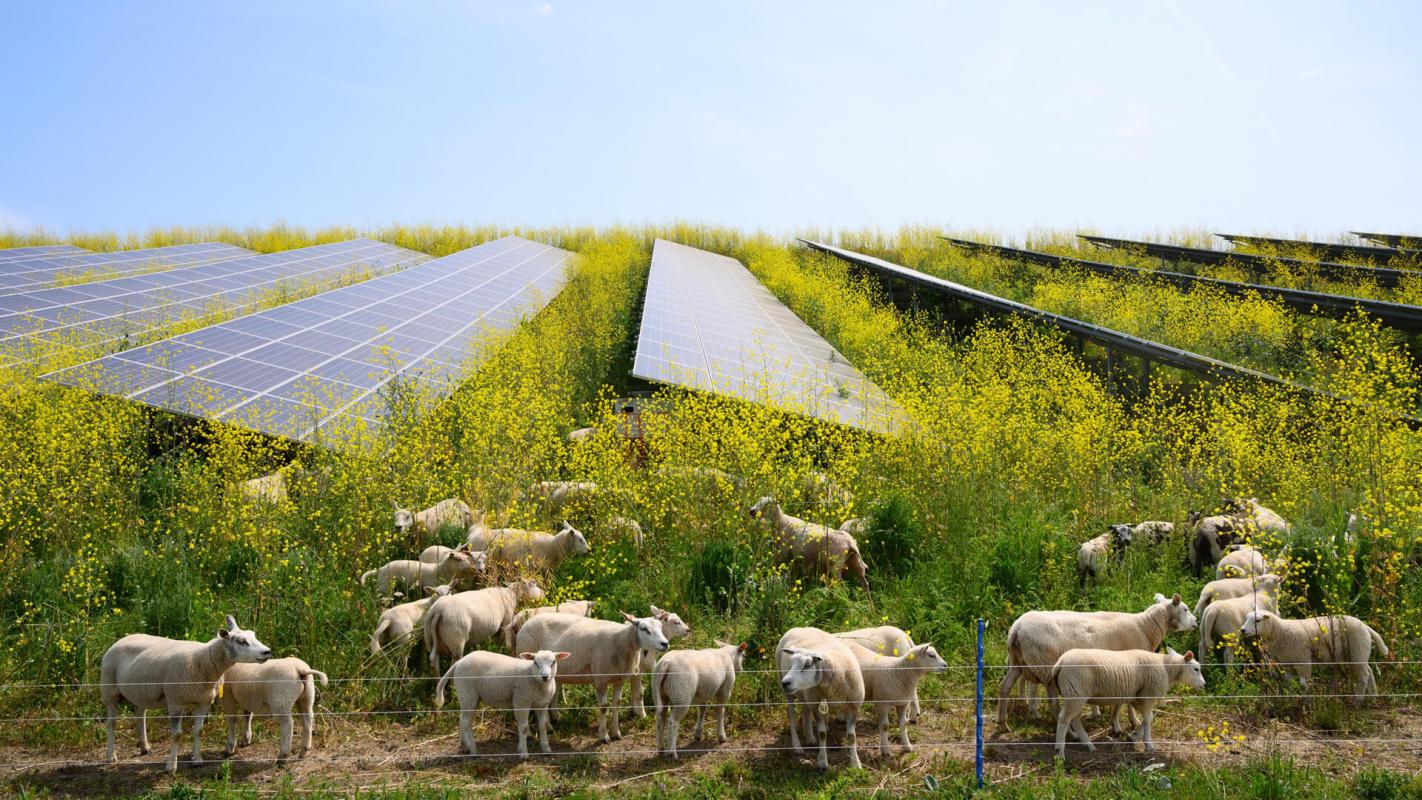Agrivoltaics is the future of farming.
As we transition away from dirty energy toward cleaner sources of power, solar energy will play a crucial role in the future of our global mixture of energy sources that supply electricity.
One of the drawbacks of solar energy is the amount of land necessary for solar panels to capture an optimal amount of sunlight. Because of this, solar panels are installed onto buildings where they can harvest energy from the sun without taking up too much land.
Agrivoltaics — also known as agrophotovoltaics, dual-use farming, or agri-PV — takes this idea a step further, using agricultural land to harness solar power while simultaneously growing food.
What is Agrivoltaic farming? Agriculture + Photovoltaics
Agrivoltaics is a concept that allows agriculture and solar panels (or photovoltaics) to share the land rather than competing for it.
The process involves installing solar panels over crops that thrive in the shade, or placing them above rangeland for livestock. The solar energy generated from these panels is sold to an energy supplier and then sent to a power grid.
Agri-PV systems allow animals to seek shade underneath the panels, or for the crops below to receive sunlight during indirect sun hours.
Agri-PV isn't a new concept — it was first developed in 1982. Since 2014, an estimated 2,200 agri-PV systems have been installed globally.
A handful of pilot programs have cropped up in the U.S., notably in Maine, Massachusetts, and Colorado.
Agri-PV systems can help to support farmers, in turn supporting entire communities. This efficient use of land can aid agricultural industries in areas around the world with unreliable power and water sources while supplying them with clean solar energy.
TCD Picks » Quince Spotlight

How does agrivoltaics help plants grow?
Solar panels and crops mutually benefit from agri-PV systems. The shade from solar panels helps crop productivity during harsh summer months. A part of the photosynthesis process of crops helps increase solar panel efficiency.
Plants undergo a process called transpiration, similar to how humans sweat. During transpiration, plants release water vapor from their stomata — or pores — which cool the plant and the surrounding air.
By lowering the air temperature, crops help solar panels withstand the fierce heat that would otherwise limit performance.
For crops, the constant shade from solar panels helps to regulate temperatures, from midday heat to chilly nights. Regulated temperatures allow plants to retain moisture, requiring less irrigation.
This mutualism creates harmony for solar energy and agriculture — better crop yield and a more efficient solar array.
What are some advantages of agrivoltaics?
Support for farmers: Agri-PV systems provide farmers with an extra source of income from selling solar energy, boosting business for farmers, supplying clean energy to rural areas, and increasing the value of local communities.
Promotion of clean energy: By providing local utilities with access to solar energy, agri-PV systems help to reduce the use of dirty energy sources that pollute the air and overheat the planet.
Protection against the elements: Agri-PV systems shield plants from direct sunlight and provide a source of shade for livestock. Panels can also protect crops from harsh weather conditions, which are intensifying as our planet continues to overheat.
Efficient use of land: Combining solar panels and farming on one plot of land increases the productivity of the land by 60% without compromising the production of either food or energy.
Saving water: Reducing exposure to direct sunlight allows plants to retain water — rather than sweat it out — which means crops require less irrigation in an agri-PV system.
What are the disadvantages?
Limitations on farming equipment: Agri-PV systems may limit the use of some large farming equipment on crops if planted directly below the solar arrays. These issues can be solved with adjustable vertical solar panels or by mounting the panels high.
Limited compatibility with some crops: Though agri-PV systems work for shade-resistant crops like leafy greens and root vegetables, they yield limited crop volume for plants like wheat.
High upfront cost: Though prices for solar panel systems have fallen while interest in clean solar energy has risen, the upfront cost of agri-PV systems can still be unaffordable for some farmers.
Follow The Cool Down on Instagram and TikTok.










!["It really is worth getting somebody … [who] build(s) that 20 years of service into their pricing."](https://www.thecooldown.com/wp-content/uploads/2025/02/SolarReviews-1.jpg?w=350)
